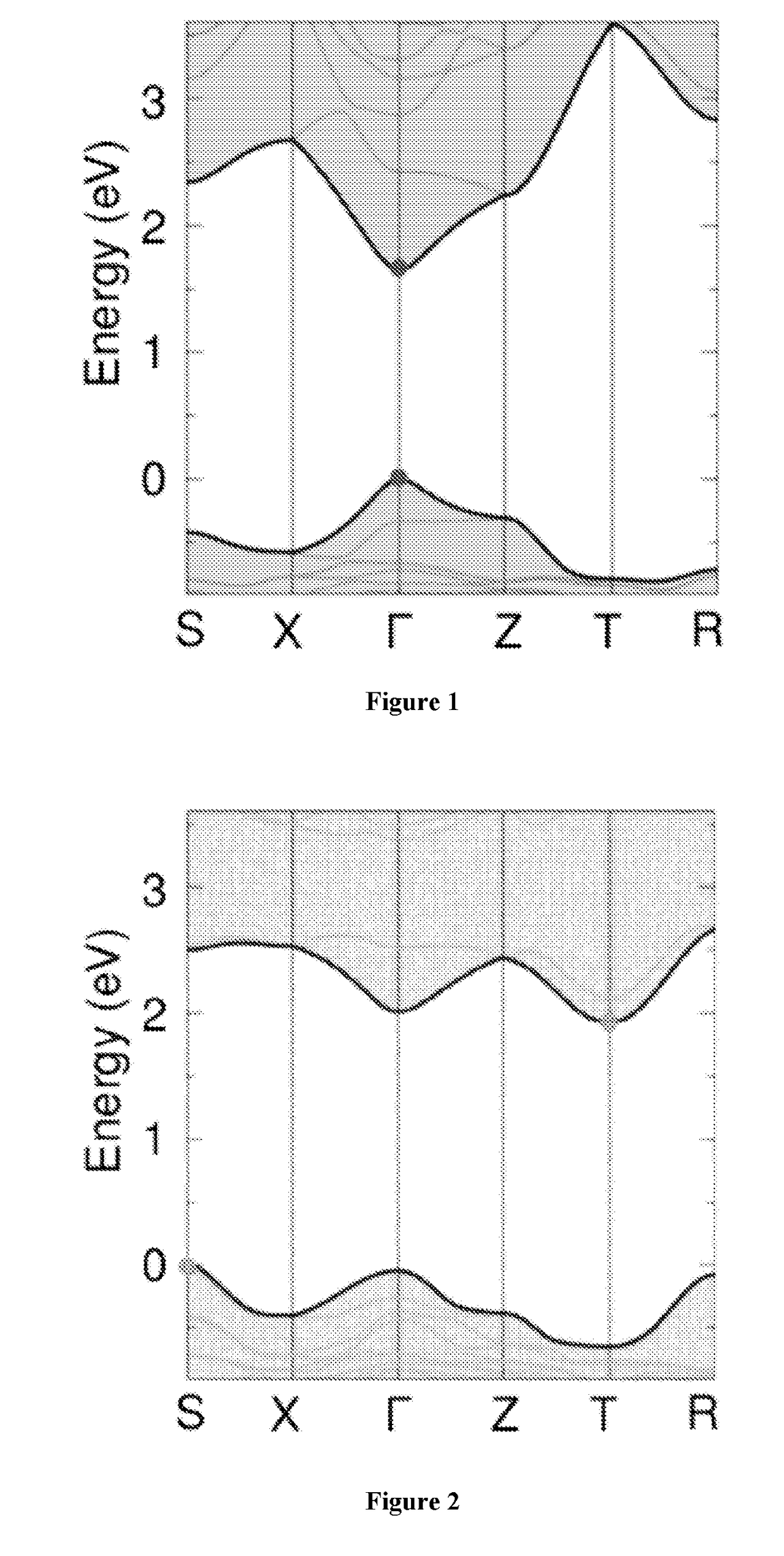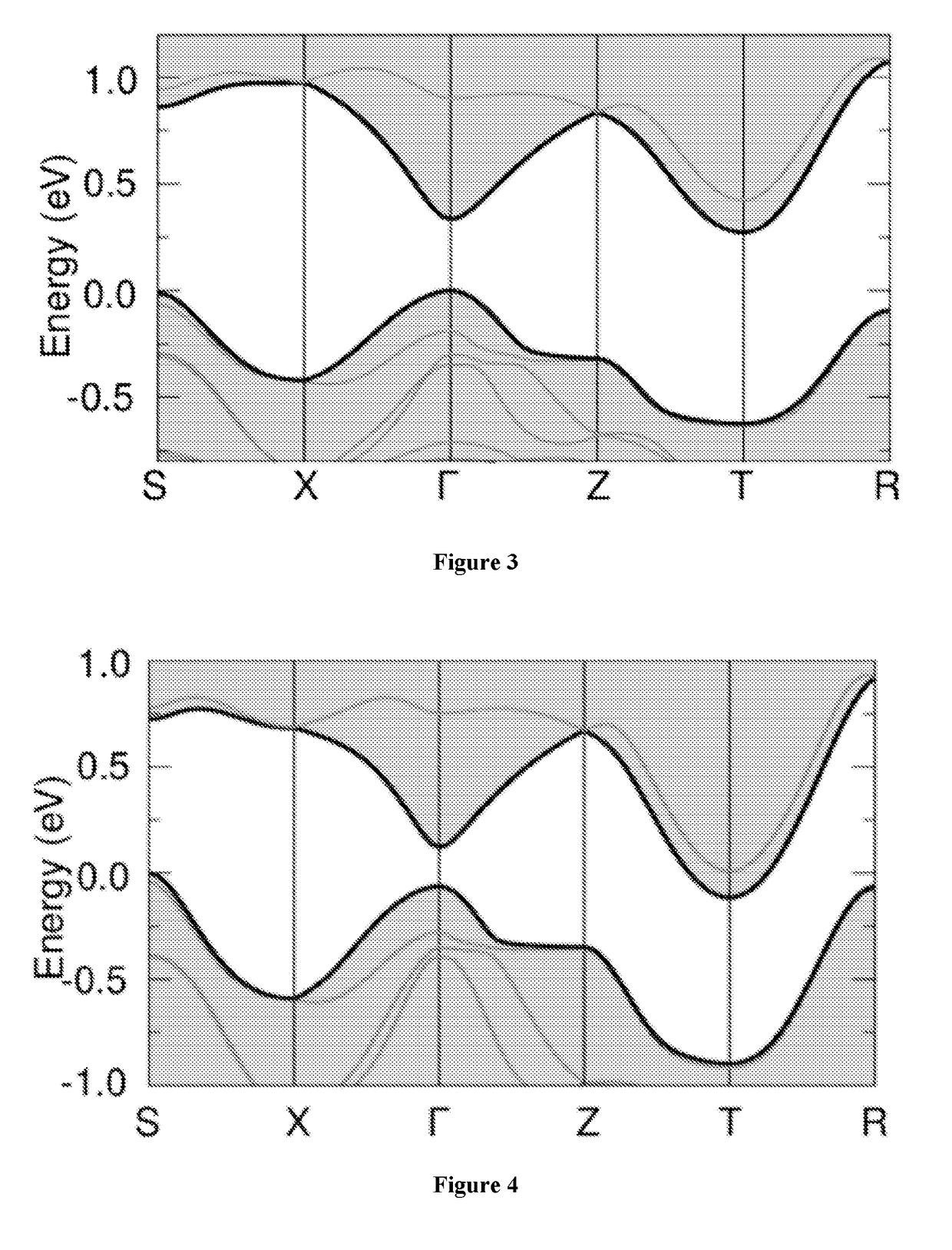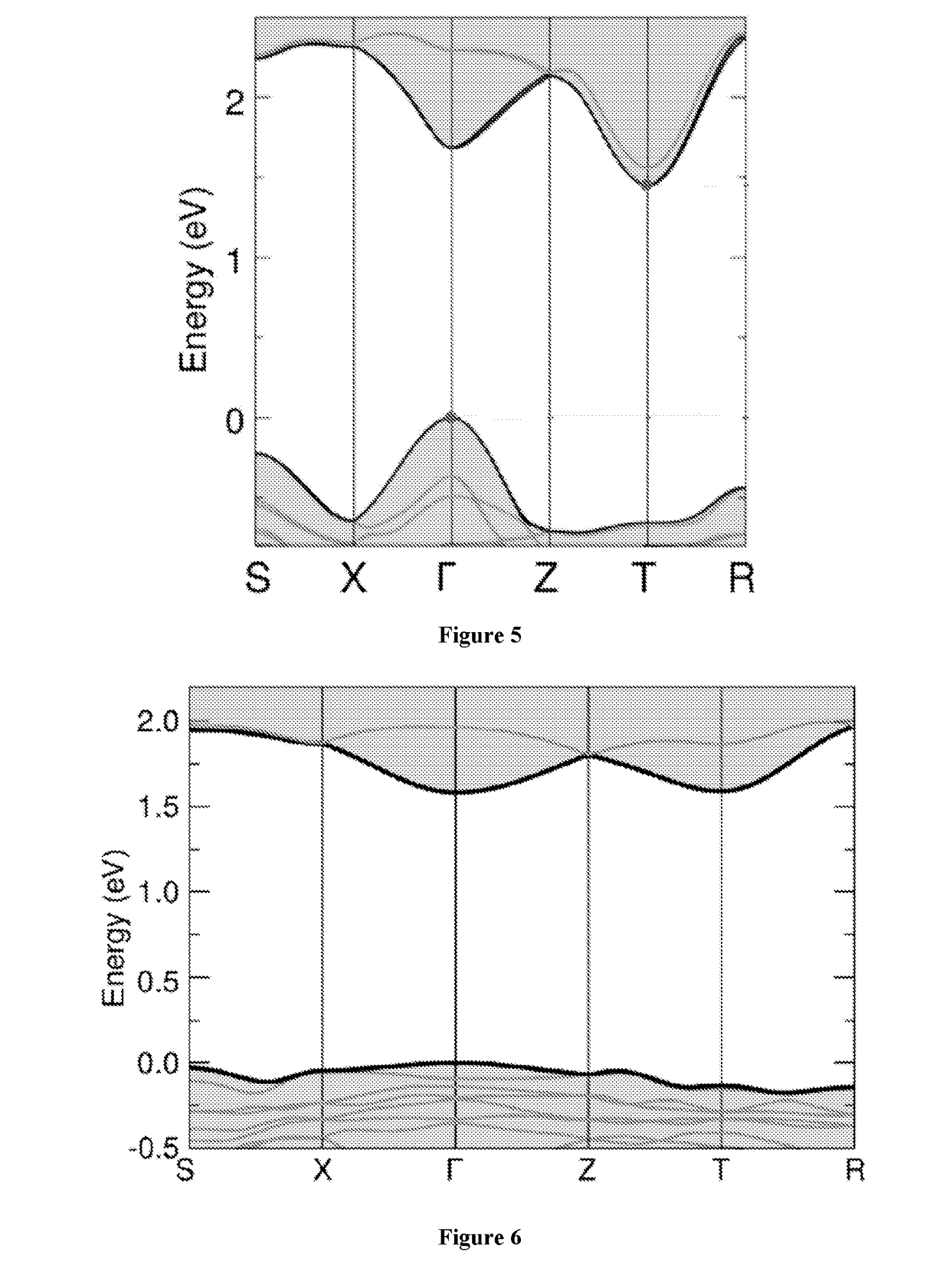Double perovskite
a double perovskite and perovskite technology, applied in the field of double perovskite, can solve the problems of not being able to identify compounds matching the potential environmental impact of these devices, and the inability to match the remarkable optoelectronic properties of mapbi, etc., and achieve the effect of strong potential for optimizing lead-free perovskite photovoltaics
- Summary
- Abstract
- Description
- Claims
- Application Information
AI Technical Summary
Benefits of technology
Problems solved by technology
Method used
Image
Examples
example 1
onal Study
Computational Setup
[0254]Structural optimisations were performed using DFT / LDA calculations, planewaves, and pseudopotentials, as implemented in the Quantum ESPRESSO distribution. For Cu, Ag, Au, and C, N, H, we use ultrasoft pseudopotentials including nonlinear core correction. For Bi and Sb we use norm-conserving pseudopotentials as in (Filip et al, quasiparticle band structures of stibnite, antimonselite, bismuthinite, and guanajuatite. Phys. Rev. B 87, 205125, 2013). All pseudopotentials are from the Quantum ESPRESSO library for reproducibility. The planewaves kinetic energy cutoffs for the wavefunctions and charge density are set to 60 / 70 Ry and 300 / 350 Ry for Bi / Sb perovskites, respectively. The Brillouin zone is sampled using an unshifted 6×6×6 grid. Forces and total energies are converged to 10 meV / A and 1 meV. All structural optimisations were carried out using scalar-relativistic LDA, while the band structures were from fully-relativistic calculations. The eigenv...
example 5
nescence Measurements
[0271]Measurements of the photoluminescence emission spectra of MA2AgBiI6 and FA2AgBiI6 were done using a Fluorolog spectrometer with excitation wavelength of 450 nm and measurements from 470 nm-800 nm with an integration time of 0.4 seconds. The results are shown in FIG. 12.
Example 6—Synthesis and Characterisation of Cs2BiAgCl6
[0272]Synthesis: Single-phase samples of Cs2BiAgCl6 were prepared by solid-state reaction in a sealed fused silica ampoule. For a typical reaction, the starting materials CsCl (Sigma Aldrich, 99.9%), BiCl3 (Sigma Aldrich, 99.99%) and AgCl (Sigma Aldrich, 99%) were mixed at a molar ratio of 2:1:1 respectively. The mixture was loaded in a fused silica ampoule that was flame sealed under vacuum (10−3 Torr). The mixture was heated to 500° C. over 5 hours and held at 500° C. for 4 hours. After cooling to room temperature, a yellow polycrystalline material was formed. Octahedral shaped crystals of length ˜0.1 mm could be extracted from the pow...
PUM
 Login to View More
Login to View More Abstract
Description
Claims
Application Information
 Login to View More
Login to View More - R&D
- Intellectual Property
- Life Sciences
- Materials
- Tech Scout
- Unparalleled Data Quality
- Higher Quality Content
- 60% Fewer Hallucinations
Browse by: Latest US Patents, China's latest patents, Technical Efficacy Thesaurus, Application Domain, Technology Topic, Popular Technical Reports.
© 2025 PatSnap. All rights reserved.Legal|Privacy policy|Modern Slavery Act Transparency Statement|Sitemap|About US| Contact US: help@patsnap.com



